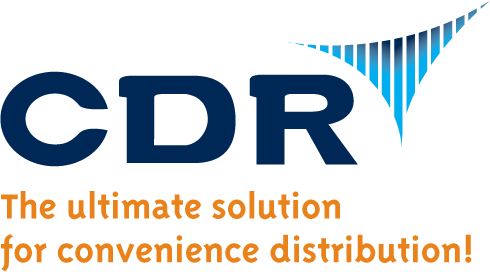Wrap Up Inventory, Finance, and Planning to Kickstart a Successful 2025
As the year draws to a close, convenience store distributors face the critical task of wrapping up the current year’s business and setting the stage for a successful new year. This period is more than just a transition; it’s a strategic opportunity to evaluate, adjust, and plan. Whether you’re a seasoned c-store distributor or new to the industry, the end of the year brings a unique set of challenges and opportunities.
In this guide, we’ll walk you through three essential steps to effectively close out the year: conducting a thorough physical inventory, completing a financial close, and setting up a comprehensive calendar for the upcoming year. These steps, while challenging, are crucial for maintaining a smooth operation and laying the groundwork for future success.
For those using DAC systems, we’ll also include some specific tips on how these processes can be further streamlined using your DAC tools. Let’s dive in and explore how you can make the most of this year-end period, setting your distribution business up for a prosperous new year.

Conduct a Thorough Physical Inventory Count
As we approach the end of the year, one of the most crucial tasks for convenience store distributors is conducting a thorough physical inventory count. This isn’t just a routine check; it’s a vital step in understanding your business’s current state and preparing for the year ahead. An accurate inventory count ensures you have a clear picture of your stock levels, helping you make informed decisions about future purchases and sales strategies.
But it’s not just about counting items. A poorly executed inventory count can lead to trouble down the road. Imagine facing the new year with too much capital tied up in unsold items, or worse, finding yourself short on popular products. These scenarios can strain your resources and relationships with retailers. That’s why a precise inventory count is more than a year-end chore; it’s a critical step in keeping your business balanced and ready for what’s next.
Planning and Execution:
Begin by scheduling your inventory count at a time that minimizes disruption to your business operations. This might mean conducting counts during off-peak hours or on days when business activity is typically lower. For those using DAC, the streamlined inventory management tools offer real-time data and analytics to make the process more efficient and accurate.
Team Involvement:
The accuracy of your inventory count heavily relies on the team conducting it. Ensure that every team member is well-trained and understands the importance of their role in this process. A clear understanding of the counting procedures and the use of any relevant technology, like barcode scanners or inventory management software, is essential.
Addressing Common Challenges:
Inventory counts often reveal issues like overstocking or understocking. Use this opportunity to study your inventory trends and make informed decisions for the upcoming year. Accuracy is key, so plan for spot checks and reconcile your physical count with your inventory records. Any discrepancies should be fully investigated and resolved to maintain the accuracy of your inventory data.
Completing a Financial Close for Convenience Store Distributors
Another critical year-end task for convenience store distributors is the financial close. This is about more than just balancing the books; it’s an opportunity to go over your financial health and prepare for the upcoming fiscal year. Why is this so essential? A proper financial close helps you understand your business’s profitability, manage tax obligations, and set realistic budgets for the future.
This financial review is a key moment for reflection and forward planning. It allows you to look closely at the financial story of your past year, highlighting successes and uncovering areas for improvement. By taking a close look at your financial activities, you’ll gain valuable insights. These can play an important part in guiding your decision-making going forward.
This isn’t just about closing a chapter; it’s about gaining knowledge and making smarter choices. This will help you set achievable goals for the year ahead and ensure your business remains strong yet nimble in the ever-evolving distribution landscape.
Understanding the Process:
The financial close involves reviewing all financial transactions of the year, ensuring they are accurately recorded and categorized. This includes reconciling bank statements, reviewing accounts payable and receivable, and ensuring all invoices and receipts are accounted for. For DAC system users, the financial management suite can streamline this process and make it easier to spot discrepancies and trends.
Setting the Stage for the New Year:
Once your books are in order, it’s time to look forward. Use the insights gained from your financial close to set budgets and financial goals for the new year. This might include finding areas to reduce costs, increase revenue, or strategies for better cash flow management. Remember, a well-planned budget is a roadmap to financial success.
Tax Preparation and Compliance:
The end of the financial year also means preparing for tax season. Ensure that all financial records are accurate and complete to allow for smooth tax filing. This is also the time to review any tax changes that might affect your business in the coming year. For those using DAC, our software can help ensure that all financial data is compliant with tax regulations, reducing the risk of errors and penalties.

Strategic Yearly Planning: Your Roadmap for Success
As we get ready to turn the page to a new year, it’s also essential for convenience store distributors to conduct their strategic yearly planning. What is a strategic yearly plan? It’s not just about filling in dates on a calendar; it’s about creating a roadmap that guides your business through the twists and turns of the upcoming year.
Effective planning involves more than keeping track of holidays and peak seasons. It’s the process of aligning your business operations with the anticipated fluctuations of the market. This roadmap is your blueprint for success, helping you navigate through busy periods, anticipate customer needs, and better manage your resources.
Without strategic planning, you could find yourself in a whirlwind of last-minute orders, inventory shortages, or even staff overloads. On the other hand, during slower periods, you could face the opposite challenge – too much inventory and unused resources.
Thoughtful yearly planning helps you avoid these pitfalls. By anticipating what’s to come, you can make better decisions about staffing, inventory management, and logistics. This ensures that your business will run smoothly throughout the year and keep your operations lean and responsive.
Mapping Out Key Dates and Events:
To get started, identify any critical dates for your business in the upcoming year. This includes not only the obvious holidays and peak seasons but also less apparent but equally important events like industry trade shows, major retail promotions, and internal milestones. For DAC system users, entering these dates into your DAC calendar helps align your operations with these key events, ensuring you’re always a step ahead.
Related: Why Attend Convenience Trade Shows? Strategies for Growth and Innovation
Planning for Order Promising and Down Days:
A crucial aspect of your calendar should be planning for order promising and down days. This involves understanding the ups and downs of your business cycle and planning accordingly. Identify periods when you expect high demand and ensure you have the resources to meet it. Similarly, recognize slower periods and plan for potential down days. This foresight helps maintain a balanced operation, both during peak times and slow periods alike.
Anticipating Customer and Business Needs:
Your calendar should also account for the specific needs of your customers and your business. This includes planning for any holidays when your business might be closed but your customers are still operational. Anticipating these situations allows you to plan for alternative arrangements, such as advance deliveries or adjusted schedules. This will ensure that the service you provide your customers remains reliable and uninterrupted.
Conclusion: Preparing for a Successful New Year
It’s clear that the end of the year is a key time for planning and getting ready for what’s ahead. By doing a detailed physical inventory count, wrapping up your financials, and planning your calendar for the next year, you can lay the foundation for a successful new year in the c-store distribution business.
The aim here is not just to get through the year-end rush but to excel in it. By following these practices, you’re not only wrapping up the current year but also preparing for a new year of growth and success. And for those using DAC systems, these tasks become even easier, freeing up more time for you to focus on big-picture strategies.
As you tackle these end-of-year tasks, remember that the effort you put in now will set you up for rewards in the coming year. Here’s to a great end to this year and an even better start to the next!
Want to learn more about the DAC advantage?
As you wind down the year, consider whether or not your current software is truly supporting your goals. At CDR, we’re always hard at work optimizing our system based on the valuable feedback we receive from our customers. The result? A solution perfectly tailored to the needs and demands of hard working convenience store distributors. Get in touch with our team to learn more today!
Frequently Asked Questions
Why is year-end planning important for convenience-store distributors?
Year-end planning helps ensure financial accuracy, regulatory compliance, and strategic readiness for the upcoming year. It provides an opportunity to review performance, reset goals, and streamline processes, all contributing to operational efficiency and growth.
What should distributors focus on during a year-end close?
Key focus areas include completing inventory counts and reconciliation, closing accounts receivable and payable cycles, finalizing cost analyses, reviewing vendor rebates, and preparing for tax or audit considerations.
How can distributors prepare for a successful new fiscal year?
Set updated sales and expense budgets, identify opportunities for promotional plans, review vendor performance, forecast demand for high-margin items, and plan maintenance or equipment upgrades to start the year strong.
What role does data analytics play in year-end strategy?
Using trend reports, aging receivables summaries, rebate performance, and inventory turnover data helps distributors identify inefficiencies, forecast risks, and refine their roadmap for the year ahead.
What are best practices to ensure compliance and accuracy during year-end?
Automate reconciliation processes, standardize documentation workflows, conduct audit-ready reviews, involve a cross-functional team (finance, operations, warehouse), and ensure all system data is reconciled before closing the books.

